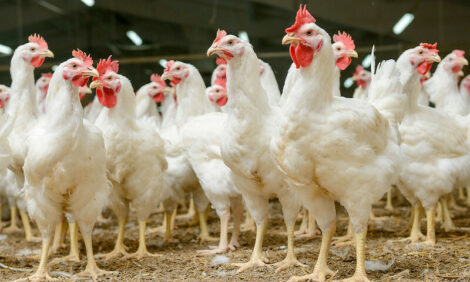



French Study Looks at Listeria Prevalence on Farms
FRANCE - According to research at Anses, the presence of pets and rodents, general biosecurity measures, litter storage, manure handling, feed form and drinker system appeared to impact the prevalence of Listeria monocytogenes on egg and broiler farms, which averaged around 30 per cent of the flocks studied.Kristell Aury and co-workers at the French Agence Nationale de Sécurité Sanitaire de l'Alimentation, de l'Environnement et du travail (Anses) in Ploufragan have published a paper on their study of the risk factors for Listeria monocytogenes contamination in French laying hens and broiler flocks in the journal, Preventative Veterinary Medicine.
They explain that the objective of their study was to identify potential risk factors for L. monocytogenes contamination in French poultry production. Eighty-four flocks of layer hens kept in cages and 142 broiler flocks were included in this study. For each production type, a questionnaire was submitted to farmers and fecal samples were taken to assess the L. monocytogenes status of the flocks during a single visit to the farm. Two logistic regression models (specific to each production) were used to assess the association between management practices and the risk of L. monocytogenes contamination of the flock.
The prevalence of L. monocytogenes-positive flocks was 30.9 per cent (95 per cent CI: 21.0; 40.9) and 31.7 per cent (95 per cent CI: 24.0; 39.4) for cage-layers and broiler flocks, respectively.
For layer flocks, the risk of L. monocytogenes contamination was increased when pets were present on the production site. Furthermore, Aury and co-authors found that when droppings were evacuated by conveyor belt with deep pit storage, the risk of L. monocytogenes contamination decreased significantly. Feed meal was found to be associated with a higher risk of L. monocytogenes contamination than feed crumb.
For broiler flocks, the risk of L. monocytogenes contamination was increased when farmers did not respect the principle of two areas (clean and dirty) at the poultry house entrance, according to the researchers. A first disinfection by thermal fogging and the absence of pest control of the poultry house before the arrival of the next flock was found to increase the risk of contamination. When litter was not protected during storage and when farm staff also took care of other broiler chicken houses, the risk of L. monocytogenes contamination increased significantly. In the case of the watering system, nipples with cups were found to decrease the risk of contamination.
Reference
Aury K., S. Le Bouquin, M-T. Toquin, A. Huneau-Salaün, Y. Le Nôtre, V. Allain, I. Petetin, P. Fravalo and M. Chemaly. 2010. Risk factors for Listeria monocytogenes contamination in French laying hens and broiler flocks. Preventive Veterinary Medicine. doi:10.1016/j.prevetmed.2010.11.017.
Further Reading
| - | You can view the full report (fee payable) by clicking here. |








